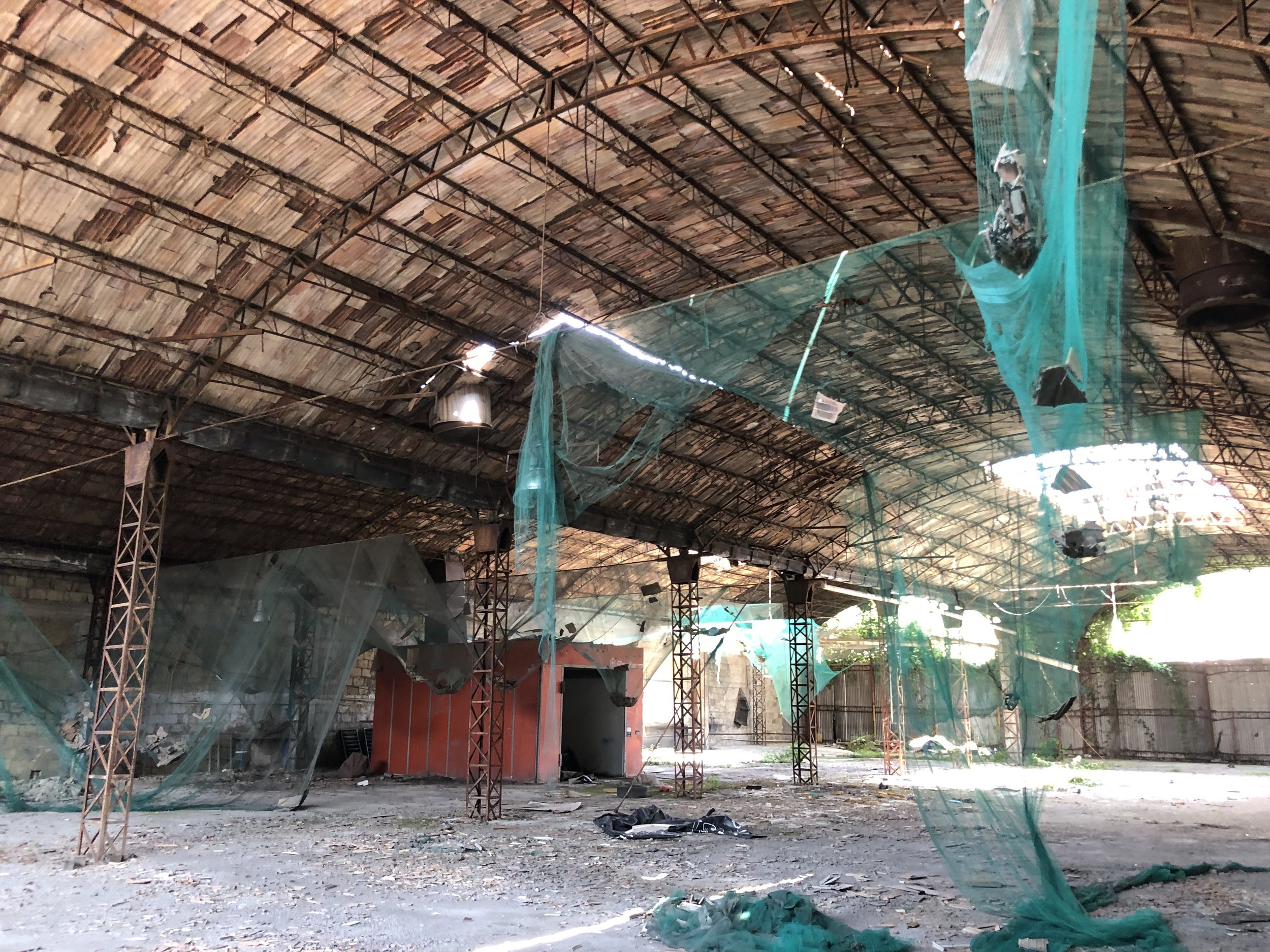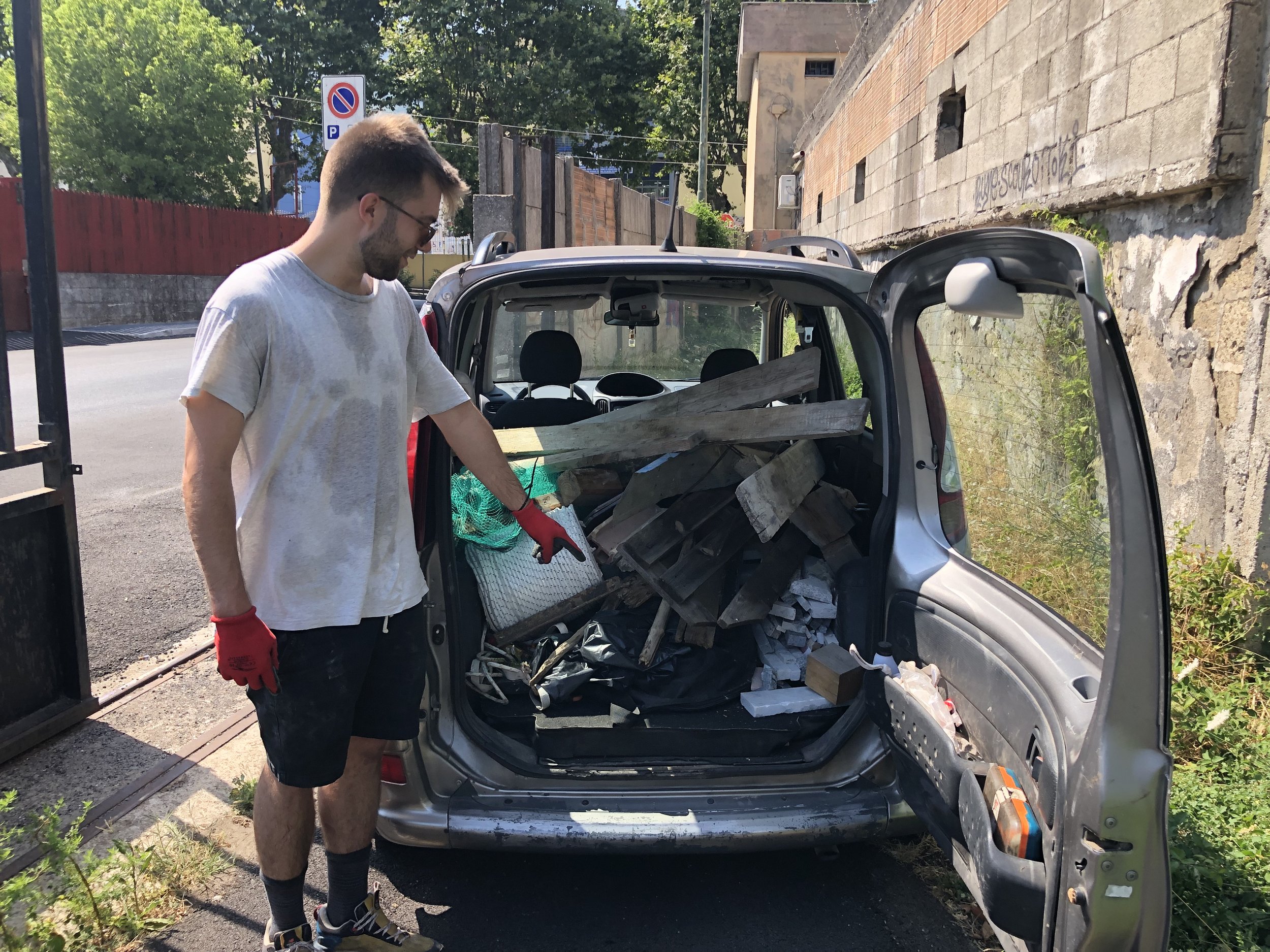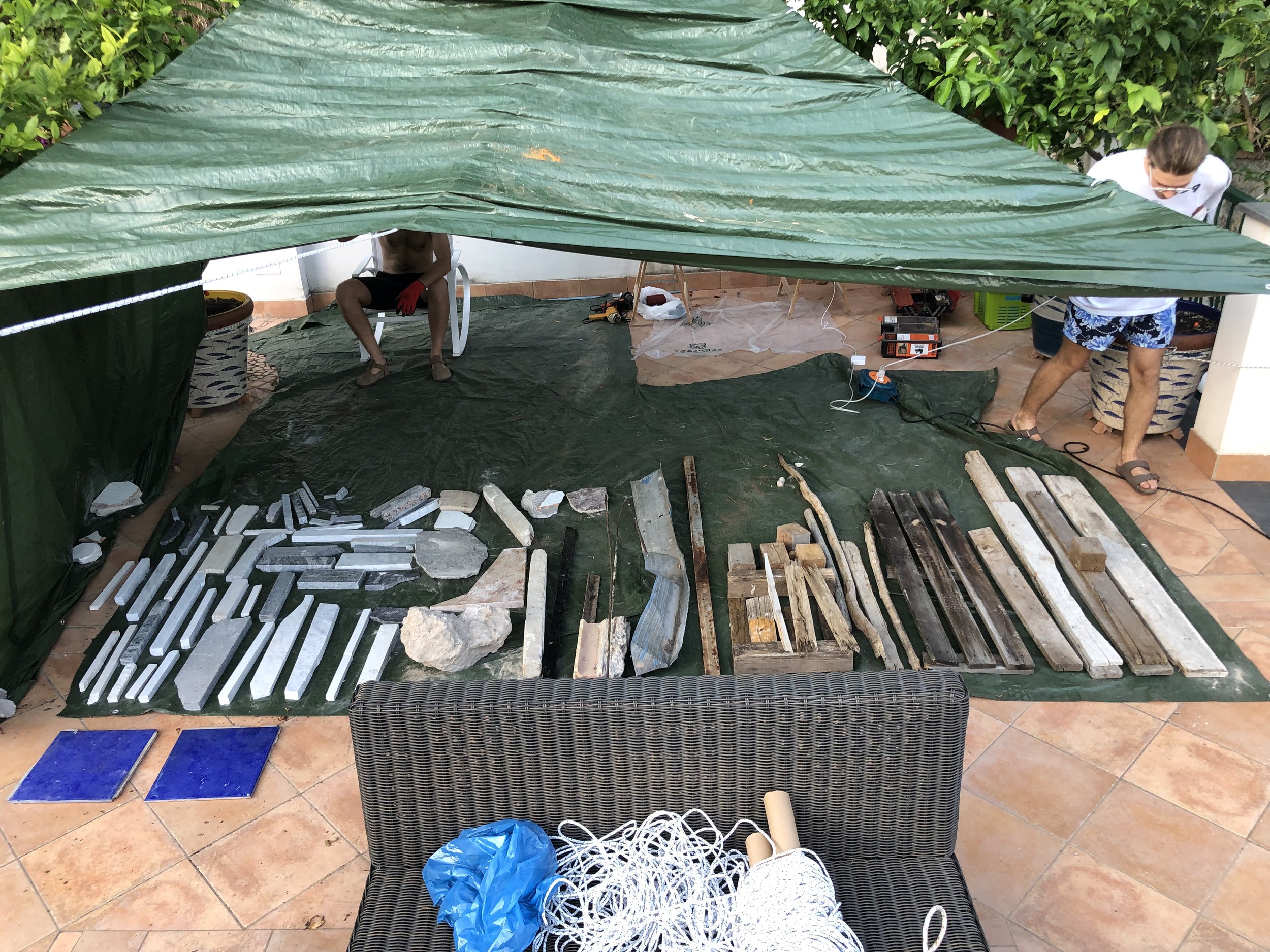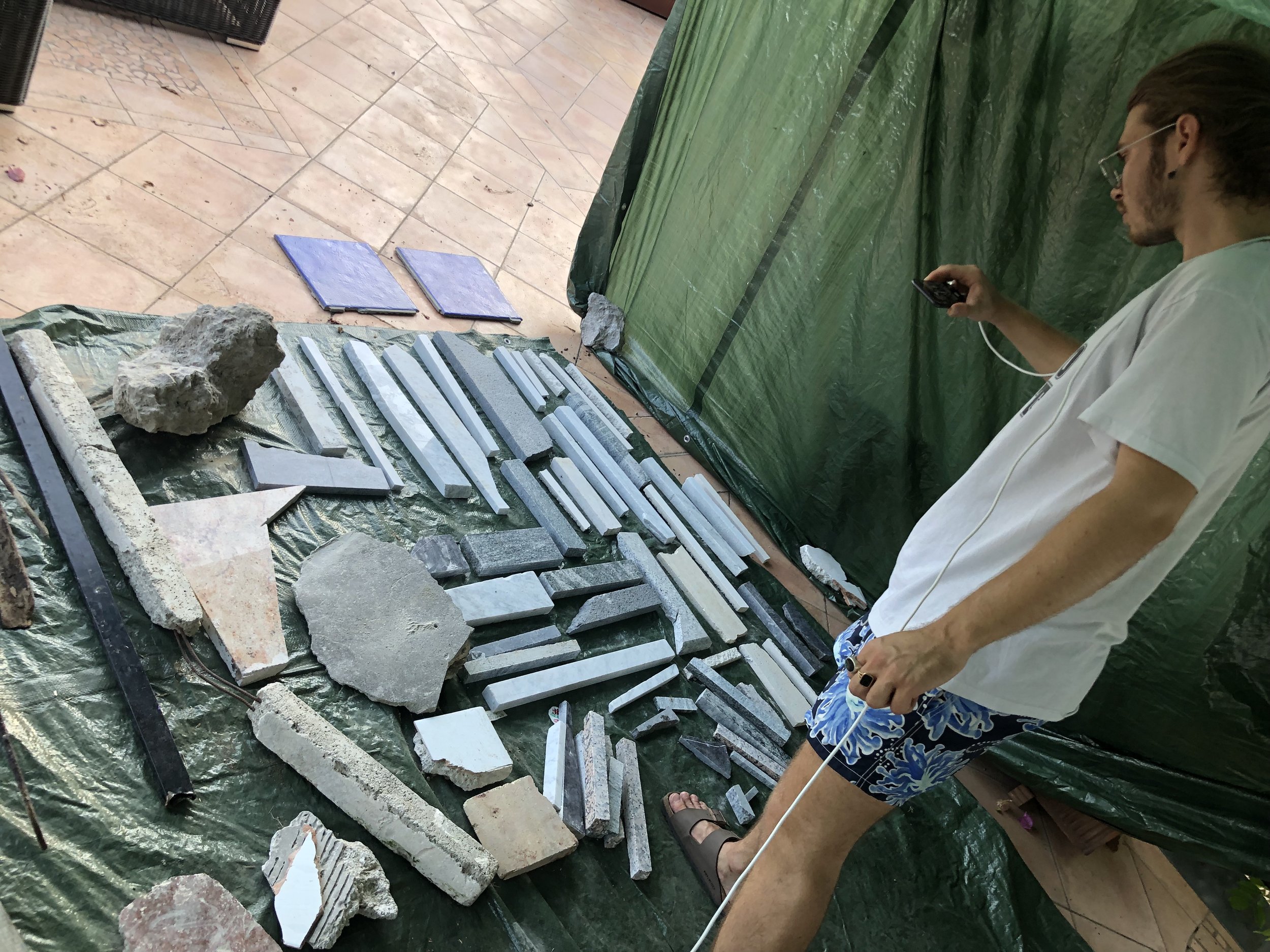Identity despoiled: fragments of a territory
Type | Sculpture
Year | 2022
Project Site | Salerno, Italy
Studio-method was invited to participate in “Alborella Art Residency 2022” and to reflect on Salerno and the territory of the Amalfi coast. The main focus was the point of view of the interrelation between the territory and the local expertise and craftsmanship present in the area and the key concept of porosity. The latter describes the peculiar ambiguity and intricacy of relations present in this place, an inclination towards uncertainty and precariousness, overlapping softness and harshness that connotate the interaction between man and nature, the architecture, territory, and the social fabric of this Italian region
Like the swing of a pendulum we observe in -western- history an oscillation between unity and fragmentation, power and re-assessment of the limits of power, humanism, and post-humanism. Like a vibration, moments of tension and release have marked the shaping of our identity in time. From the middle ages to the elliptical distortion of renaissance humanism into baroque, themes of fragmentation and de-centralization brand the cultural and artistic explorations of the posterity to unitarian ideologies. Of the ones facing the aftermath of promises of progressive ascension unaccomplished.
There is a latent humbleness linking the Romanic columns of Salerno to the fresco by Giulio Romano in palazzo tè “the fall of the giants”, one of the first to ever depict a classical column breaking into pieces.
The retrospective haze left when an empire collapses is what we inhale when we turn to leftovers as a source rather than a stigma. Forced by the lack of a systematic chain of supply and material shortages we let go of muscular technological enterprises and start looking around at what is available, and sufficient. A different kind of beauty.
We switch from the single-piece-eleven-meter-long rose granite columns of the Pantheon brought from Egypt on slave boats to the collecting of capitals from the ruins of nearby Paestum to piece together the columns of Salerno’s duomo.
With “identity despoiled: fragments of a territory” we explored this analogy and its meaning for us now in a time of harsh crisis. A time marked by a re-assessment of power and ideological fragmentation as a consequence of multiple hits ranging from climate crisis to pandemics to war. How do we piece together our identity? What undisclosed beauty emerges from this condition?
We explored the historical significance of re-collection and caretaking in a contemporary key focusing on the core material concept of waste and leftovers. By coming in close contact with the local artisanal expertise of marble workers in the area around Cava de’ Tirreni we reclaimed precious fragments from the byproducts of stone-cutting. Granite marble and travertine pieced together to display the beauty of brutal substance and reveal the alternative constructive power of memory and nostalgia.
“The phenomenon of the reuse of antiquity in architecture is a widespread practice in the monumental complexes of medieval Campania, particularly the centres of Salerno and the Amalfi coast. Research .. has highlighted the extent of the phenomenon of appropriation of the antique from the ruins of the Latium sites. These are cities that built their cultural identity during the medieval period through the plundering of marbles from Rome and Ostia to display them as trophies and symbols of memory.
“Angela Palmentieri, Il riuso in Campania. Pratiche e ideologia nelle architetture medievali di Salerno e della costa d’Amalfi, 2017”
Constricted Artifact
Nautical Artifact
The versatility of the workers in constructing masonry units out of heterogeneous materials, the solicitations that came to the city from the Gregorian experience, the skill of the Amalfi seafaring industry and the proximity to the coast initiated a broad process of procurement of the lithic material necessary for the needs of the great building sites, in particular the cathedrals of Salerno and Amalfi.
t“Angela Palmentieri, Il riuso in Campania. Pratiche e ideologia nelle architetture medievali di Salerno e della costa d’Amalfi, 2017”
Unpacking the intricacy of scavenging leftovers as a defining historical tendency in the middle ages cannot leave out of sight the prominence of the territory and its relation to the sea in the specific case of Romanic Salerno and the Amalfitan coast.
Scavenging and organizing debris does not mean a regression to more primitive forms of community, rather, it means the emergence of different and situated expertise and inclinations. A re-orientation of technical efforts that makes the supply of debris possible at scale is an example of that in XII century Italy. An attitude toward leftovers that requires “great skill and care”1 in looking, finding, transporting, fitting, and fixing the broken pieces. In this sense, the relation between the maritime republic of Amalfi and the newly discovered Romanic Identity of Salerno speaks of taking care of the fragments of the past as a possible alternative social, economical, and political identity. A different system of relations that stems from the action of looking at reality overcoming the functional lenses of performance. Having a gaze that entertains a creative dimension with the past, the memory of the past, and the imagination of the future.
A different poiesis that Norman craftsman must have had when suddenly a piece of marble laying in the roman ruins of Pompeii becomes worthy of a place on board a sophisticated Amalfi vessel. When materials on the ground cease to be looked at as broken pieces of a once-functional object, our linear conception of time bends and crashes into multiple intersections and overlaps. All that is left is the relationship between materiality and poetics, substance and imagination.
This second artifact encapsulates this overlapping of meanings by playing with the imagery of the sea, of navigation. Of the Amalfitan ships in the depths of the Mediterranean and those that ply it today bound for the port of Salerno towards its heavy cranes. Of the fish caught by the ships, those ships perhaps being fish.
Their scales thrown away after a copious meal.
When the border between detritus and pristine gets increasingly blurred, our present fossilizes into an archeological dimension and our technical objects get reduced to their mere physical effort.










